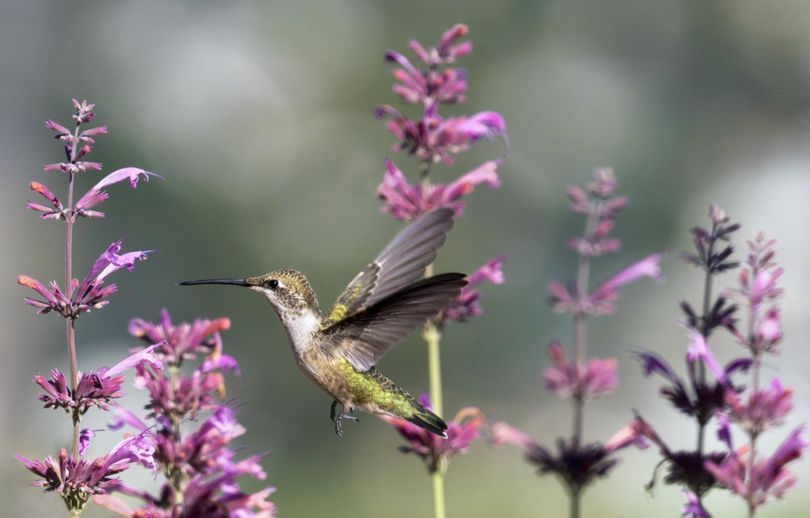Hummingbirds tough to identify when juveniles aloft

NATURE -- When a Reader Outdoor Photo Gallery image posted this week raised a question of species identification, I solicited the expertise of "private eyes" in the regional birding community.
The sweet photo above was snapped Sunday at Arbor Crest Winery by Courtney Litwin, but neither of us could make a confident identification. Turns out that a lot of experienced birders had some doubts, too.
The problem in late summer stems from all the juvenile birds of the year that don't have a full compliment of feathers and colors to aid in identification and sexing.
A few birders thought the hummer above might be an Anna's. A higher number of birders thought it could be a Calliope. But the majority of birders responding say the bird is a black-chinned hummingbird, most likely an adult female but possibly a juvenile.
Here's a sampling of responses to show how birders reasoned their opinions.
- "Female and juvenile hummers are pretty tough to ID., but my best guess would be female black-chinned hummingbird based on longish bill, buffy sides, no rufous coloring and slender body," said Catherine Temple.
- "The bill is the right length for a black-chinned hummingbird certainly not Calliope or Anna's in my mind," said Bob Flores.
- "I always feel shaky trying to ID fall hummers, but I think it's a black-chinned because the beak looks too big for a Calliope," said Kelly Cassidy.
- "My guess, also, is black-chinned," said Marian Forbe. "The bill is too long for Calliope."
- Kim Thorburn of Spokane Audubon said, "The rufous tinge to the flanks is characteristic of calliopes, at least among our local hummers." And she added that if we had video instead of a still shot, the identification would be easier. "Black chins, babies or not, are easy if you see them in flight. They have a diagnostic up-and-down tail wag, like a rudder."
Birder Carol Riddell offered the most detail on her thought process:
Black-chinned hummer is a code 1 in Spokane County, meaning very common, I’d say you have an adult female. Anna’s hummingbird is a code 4 for the county, meaning that there are more than 5 records of the species. These are the two species to be considered from your photo. The bill is longer and heavier than that of an Anna’s. A shorter bill on a proportionately bigger head would suggest a rare Anna’s. Your other code 1 hummer is Calliope but it is a 3.25” bird. Yours looks consistent with a 3.75” black-chinned. I suspect most votes will come in for adult female black-chinned hummer.
Thanks to all for the fun and enlightenment.
